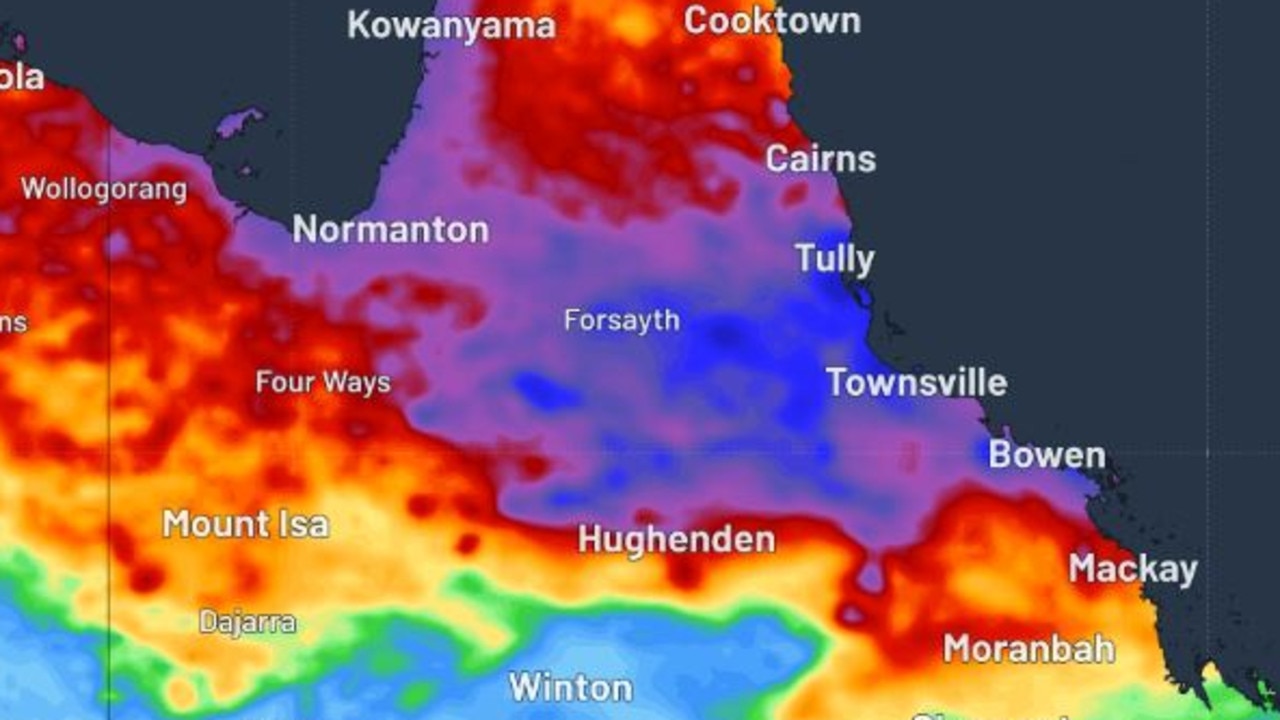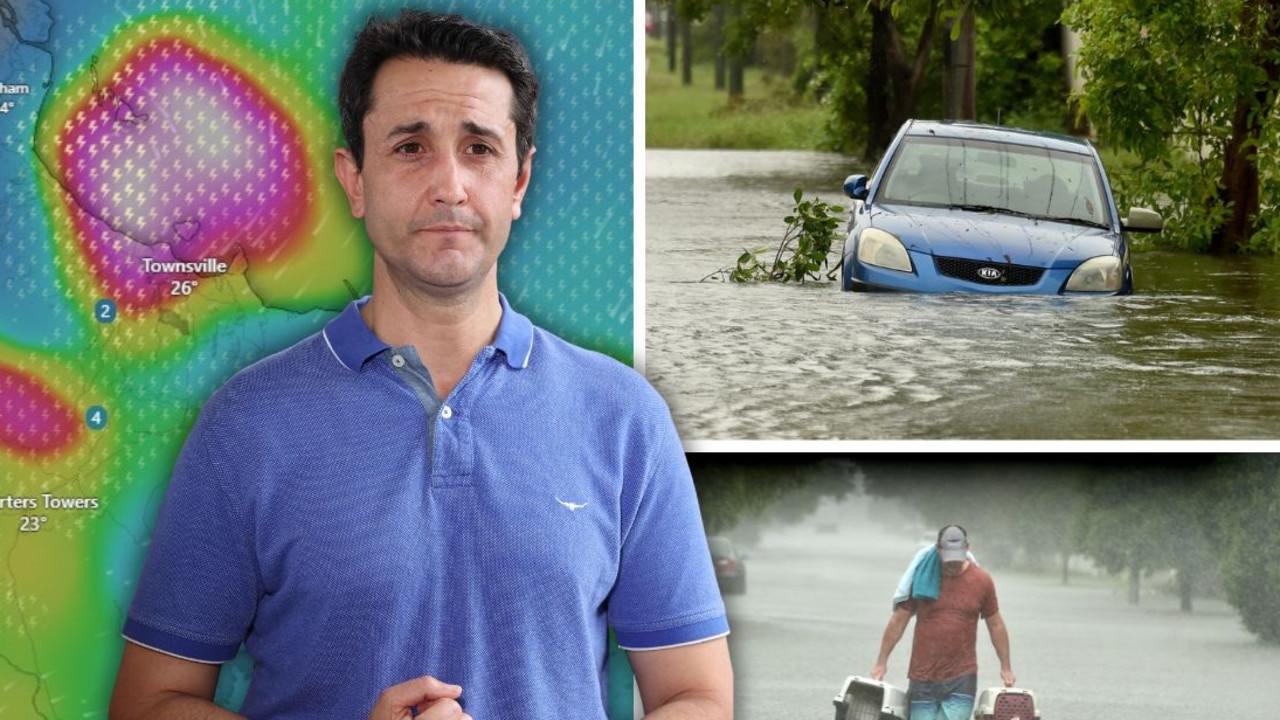‘Wall of water 50ft high’: Great Brisbane floods of 1893
In a freakish turn of weather Brisbane flooded three times in February 1893, leaving a third of the population homeless and claiming the lives of 35.
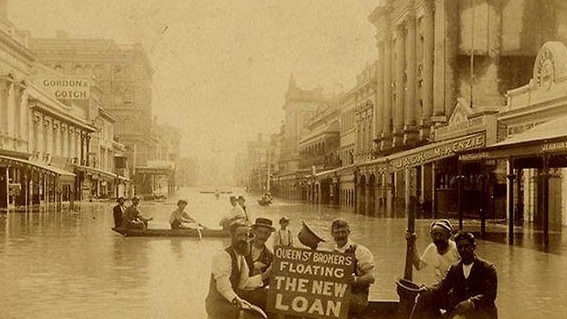
QLD weather news
Don't miss out on the headlines from QLD weather news. Followed categories will be added to My News.
In 1824 John Oxley was the first European to observe the flooding of the Brisbane River, noting that the floodwater must have reached at least 50 feet according to the debris caught in the treetops.
The river flooded regularly every few years, but that didn’t stop houses and businesses building on the flood plain. But nothing could prepare Brisbane for the waterlogged events of February 1893, the year of the ‘Great Flood’.
That freakish year three floods descended on Brisbane on the 5th, 12th and 19th of February rendering a third of the population homeless and at least 35 people dead.
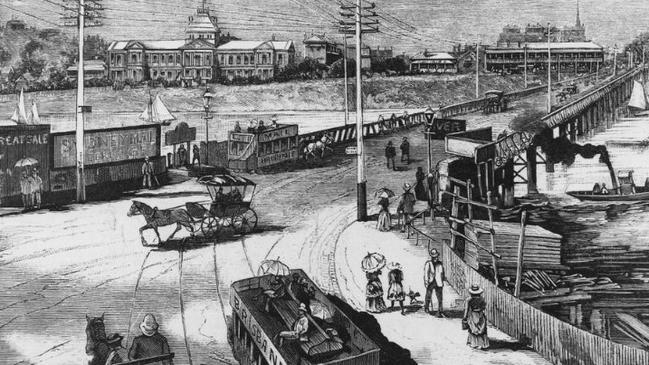
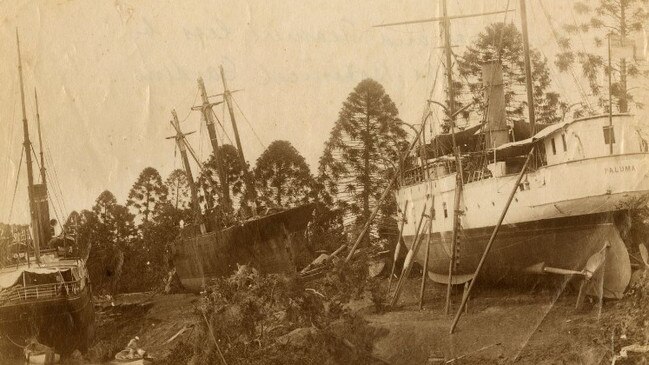
The might of the first named cyclone in Australia, Buninyong, was experienced by Clement Wragge the Government Meteorologist on board the steam ship of the same name off Mackay. Winds of 160 kilometres per hour dumped record rains over the catchment and most dramatically on the Stanley River. As it tracked south Buninyong passed over Crohamhurst, near Landsborough, home to Wragge’s protégé Inigo Jones who recorded Australia’s highest rainfall of 907mm in one day.
Further south at Caboonbah near, Toogoolawah, grazier Henry Plantagenet Somerset and his wife Katherine were awaiting the birth of their child when he saw ‘a wall of water coming down 50 feet high’ roaring down the Stanley River. He immediately telegraphed a warning which was basically ignored and eventually a flood of 8.35m reached the Brisbane Port Office.
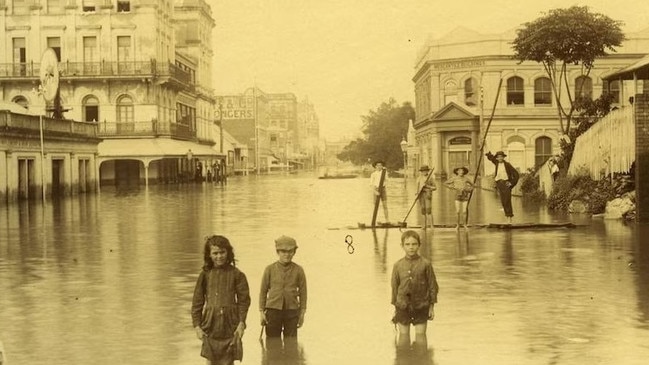
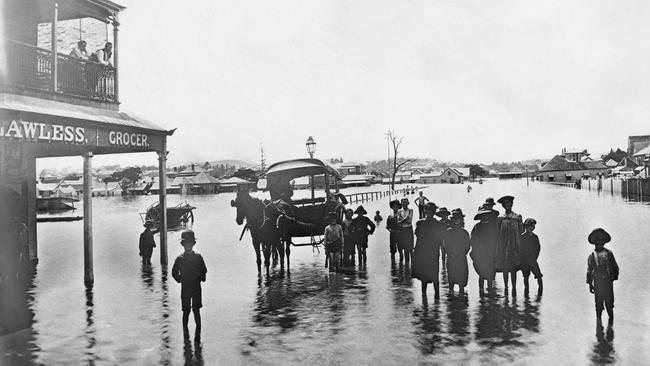
Buninyong’s force decimated the towns of the Brisbane Valley and washed away the Indooroopilly and Victoria Bridges. Indooroopilly Bridge claimed the lives of little Launcelot, 5 and Selby, 2, sons of a senior public servant who were playing on the 40 feet high steep sand cliff the river had deposited on the bank. The bank collapsed and despite the bystanders frantic digging with their bare hands, the boys were buried alive.
In Ipswich the water backed up the Bremer River inundating the city and essential heavy industries.
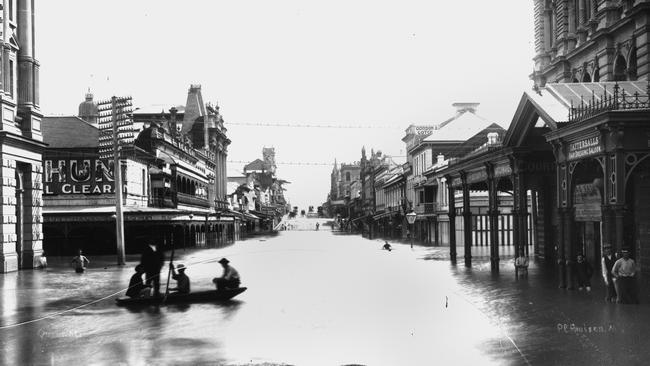
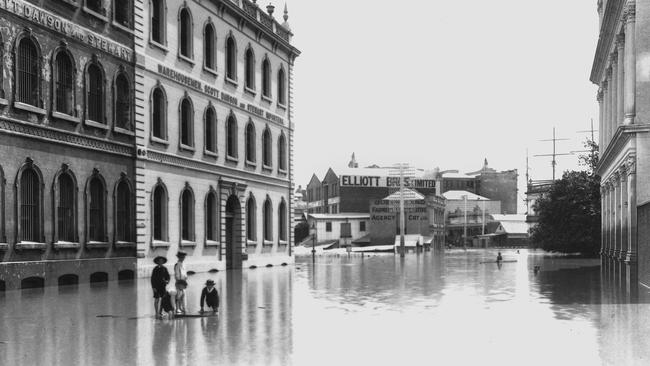
At the Eclipse Mine at Tivoli seven miners were drowned and entombed including the owner’s sons Tom and George Wright. Six widows and 25 children were left to be cared for by a charity for widows and orphans.
The Vernor family of eight from Fernvale piled into their punt to escape the flood only to have it capsize and throw them into the deluge. They all struggled to a tree and on the instruction of the father Captain Vernor they tore up their clothes and tied themselves to the branches, clinging there all night until rescue the following afternoon.
Downstream in Brisbane shipping was sunk or grounded including the Queensland Navy gunboat HMQS Paluma that was tossed into the Botanical Gardens. The newspaper records show the fate of Paluma was particularly distressing as it was the pride of the colony that after only 35 years was capable of raising its own Navy.
Finally the rain stopped and the damage surveyed revealing South Brisbane, the western suburbs and the business centre the worst affected. The force of the water caused the most damage, toppling, flinging and wrecking all in its wake including whole houses. Eminent physician Dr Eleanor Bourne of West End who was holidaying at Redcliffe was stunned to discover her home’s front gate washed up on the beach.
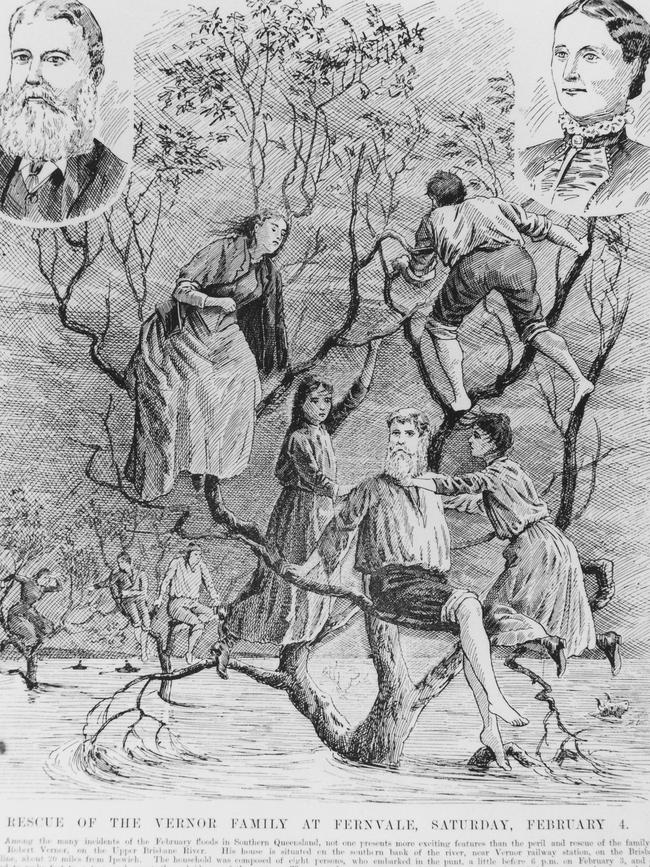
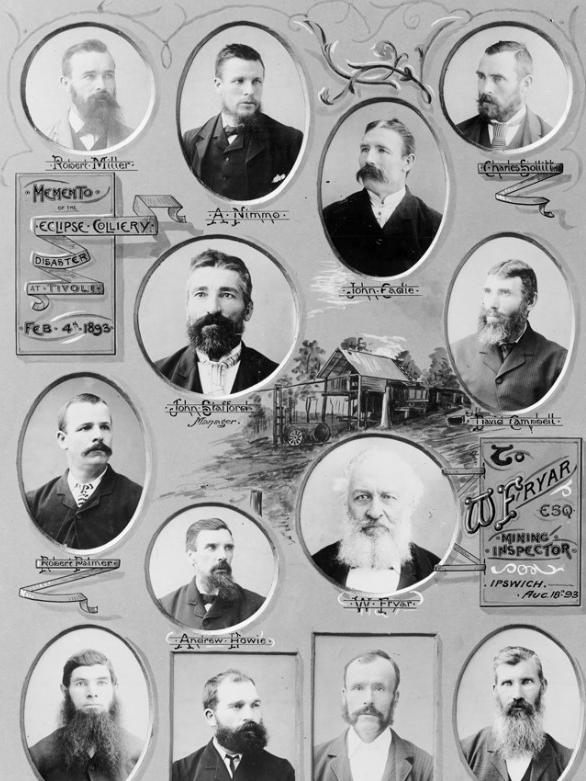
The clean up commenced only to be paused when a second less powerful cyclone formed and dumped another smaller flood of 2.4 metres on Brisbane. The government, military, police, citizens and charities mobilised again to deal with the crisis. Then on 16th February a third cyclone formed off Bustard Head and hit the waterlogged Brisbane Valley three days later. Henry Somerset observed it again, but this time the telegraph was still down from the first flood, so he rowed across the swollen Brisbane River with two horses to send a ‘good game stockman’ named Billy Mateer to North Pine with the warning. Then the flood level hit 8.09 meters on 19th February. This time the steamer Pippo on its way from delivering supplies to Tangalooma narrowly escaped a tornado in the Bay that shot a huge waterspout 40 feet into the air.
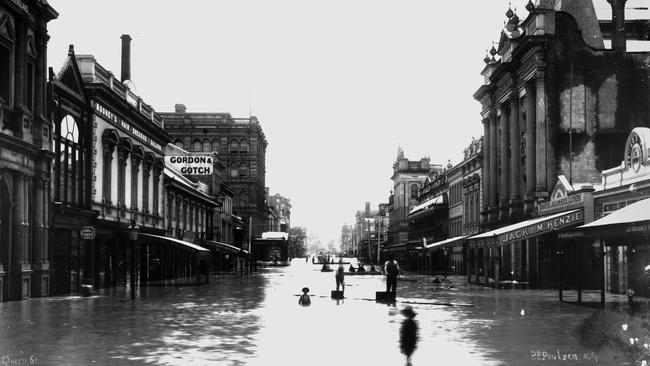
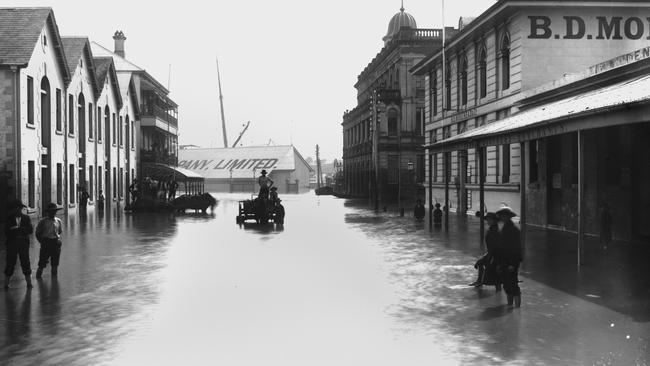
Brisbane people responded the way they always do. There was no flood insurance and no high pressure hoses but they gritted their teeth and ‘got on with it’ to clean up and rebuild. On the positive side, the third flood refloated Paluma! ‘Ruin by floods was sunshine to the opportunists,’ said the Telegraph. Looting abandoned businesses, fraudulently claiming flood relief assistance, overcharging ferry services and gouging fees to clean homes were the offences that dealt jail time.
The Brisbane River floods have been studied extensively by Dr Margaret Cook who writes that the most significant outcome of 1893 was the desire to tame the river with science, leading to the Somerset and Wivenhoe Dams. Inigo Jones careful measurement of Australia’s most rain in one day still stands.
‘A River With a City Problem’ by Margaret Cook.
Originally published as ‘Wall of water 50ft high’: Great Brisbane floods of 1893

